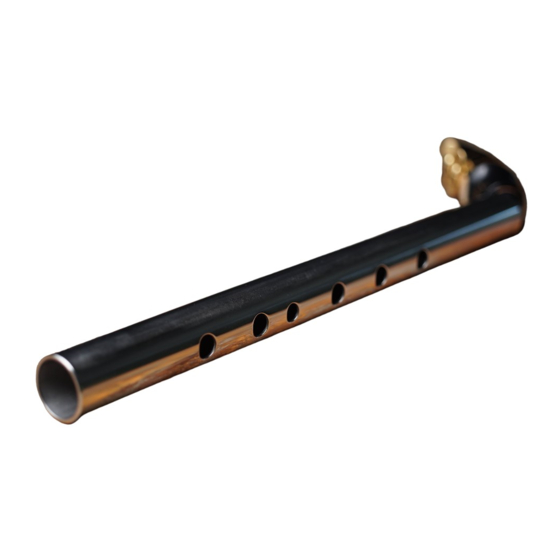
Advertisement
Advertisement
Table of Contents

Summary of Contents for Elaia MiniSax
- Page 1 MiniSax Quick Start Guide...
- Page 2 Assembling Instructions MiniSax in B Dip the neck in water (water tap) for a second which helps lower friction. Slowly start inserting the neck into the mouthpiece hole by pushing and slowly rotating it continuously until the last silicone ring and black shrink ring are not visible any more.
- Page 3 First Steps MiniSax in B Our Mini Sax is designed as many other wind/woodwind instruments are. It is "pitched" in Bb(3). This means when you play it’s basic scale: C, D, E, F, G, A, B, C by using a basic (simplest) fingering, you actually produce a one whole tone lower sound for each tone.
- Page 4 Fingering Chart MiniSax in B !===n======] !=Àn=Îo=] !===o======] !=Ào=Ïp=] !===p======] !===q======] !=Ãq=Ñr=] !===r======] !=Är=Òs=] !===s======] !=Ås=Ót=] !===t======] !===u======] " " " " " Closed Rear Hole Open Rear Hole Open Hole Semi Open Hole Closed Hole "* %* !===w======] !============]...
- Page 5 Tuning Guide MiniSax in B A = 440Hz In order to properly tune your mini saxophone and achieve desired A pitch of 440Hz, move the mouhpiece D = 408mm - 410mm up/down until the distance (D) between the reed top and lower body end is between 408mm and 410mm, depending on reed/mouthpiece combination.

Need help?
Do you have a question about the MiniSax and is the answer not in the manual?
Questions and answers